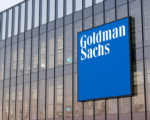In July, U.S. consumer prices experienced a moderate rise, with the annual inflation rate dropping to below 3% for the first time in over three years. This development, reported by the Labor Department, signals a continuation of the downward trend in inflation, providing potential room for the Federal Reserve to consider an interest rate cut in its upcoming meeting. The report marks the third consecutive month of tame inflation readings, aligning with evidence that consumers are becoming more price-sensitive, opting for bargains and lower-priced alternatives.

Despite the easing inflation, the cost of rent saw a notable increase in July, keeping the overall inflation rate above the Fed’s 2% target. Economists believe that while a rate cut is likely, it may not be as aggressive as some have speculated unless there is a significant downturn in the labor market. The recent rise in the unemployment rate to 4.3% adds complexity to the Fed’s decision-making process, as it suggests a mixed economic environment.
The Consumer Price Index (CPI) increased by 0.2% in July, matching economists’ expectations. The shelter cost, including rent, was a major driver of this increase, accounting for nearly 90% of the CPI’s rise. Food prices also continued to climb, with notable increases in items like eggs and meats, which could influence voter sentiment ahead of the November presidential election.
Over the past 12 months, the CPI rose by 2.9%, marking the first time it has fallen below 3% since March 2021. This slowdown in inflation is largely attributed to higher borrowing costs that have cooled consumer demand. However, the core CPI, which excludes volatile food and energy prices, remains sticky, particularly due to rising rental costs, which pose a challenge to achieving the Fed’s inflation goals.
Market reactions to the inflation data were mixed, with Wall Street stocks showing varied performance and U.S. Treasury yields dipping slightly. Financial markets have increased the likelihood of a 25-basis-point rate cut in September but remain skeptical of a larger 50-basis-point reduction.
Overall, while inflation is trending downward, persistent issues like rising rent and mixed economic signals suggest that the path to reaching the Fed’s inflation target will be gradual and cautious.
















